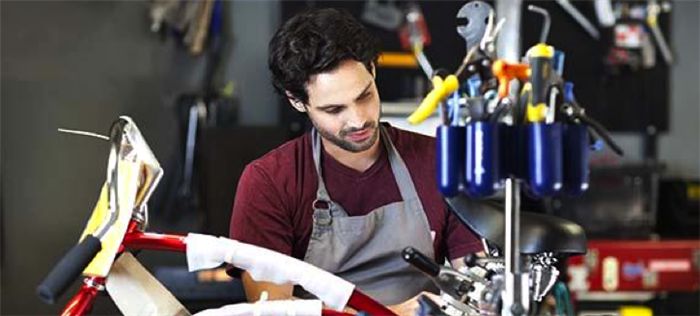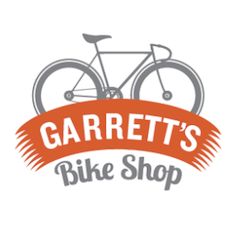Garrett McKenzie’s Impact on Our Product

A few years ago, my team was preparing to build a new web application for small businesses when I met Garrett McKenzie. He was starting a new venture after a successful stint as a mortgage broker. At 34 years old, he felt it was time for his next challenge. With a passion for cycling and a desire to become a small-business owner, Garrett decided to open Garrett’s Bike Shop in the spring of 2010, coinciding with the launch of our LivePlan product.

The advantage of designing for a close friend
Garrett wasn’t just an interesting guy with good stories. He was also a great user for our new product. LivePlan helps entrepreneurs with business planning, so I was busy thinking about the challenges of starting a new company. Meanwhile, my friend Garrett was working through those same questions in his daily life. What needs was his shop going to meet? How would he attract the right customers? How would he come up with realistic forecasts and budgets? Where would he find the extra funding?
Having a good friend who is also a heavy user of your product is valuable. Market needs and product designs can be abstract and theoretical. We were just trying to understand what Garrett needed and craft a solution. Specific problems tend to be easier to solve.
How I got to know Garrett
I didn’t meet Garrett in a conventional way. Instead, I got to know him through customer interviews, user surveys, conversations with shopkeepers and small-business owners, and other research. Garrett made our acquaintance gradually.
Garrett is something of a fiction, but he feels real to my team. Everyone here knows him well. His background. His skills and experience. His goals for his company. What parts of running a business he feels comfortable with, and where he’s likely to get lost or intimidated. What kind of software interactions he likes.
At our daily standup meeting, there’s usually someone in a Garrett’s Bike Shop shirt. He’s a virtual team member. Our friend Garrett.
Garrett is not a story we tell. He’s a story our market told us. All we had to do was listen.
Focus on making the right person happy
Why bother getting to know a specific customer? It’s all about focus. Creating great products requires a ruthless sort of focus on getting the right things right. In the absence of that focus, distractions are everywhere. Every possible feature has its advocates, every cause its champions. For startups and innovators, knowing what you are not trying to do is just as important as succeeding with those you are.
Demographics and broad stereotypes offer little help. You can’t design a solution for a demographic group. Also, different people are different, and understanding how they differ is key to making good decisions about meeting their needs.
In our case, the market is crowded with people who aren’t Garrett — power users with advanced degrees, spreadsheet jockeys who think everyone loves CSV files, the heads of conglomerates with multiple divisions. Sure, those people represent opportunities too, but we can only tackle so many at once.
Garrett is the antidote to feature bloat, to wasting time on seldom-used features or tools that don’t work the way users want them to, to the trap of trying to satisfy everyone. We don’t need to build an everything machine. We just need to do a really good job of making Garrett happy, because we know there are a whole lot of people who look and act just like Garrett.
Treat your friends right
“What does Garrett need?” Spending so much time getting to know him has led to an even better question:
If Garrett was a friend of mine, and he came to me for advice, how would I advise him?
The answer we want is that I would recommend that he use our product exactly as designed. If that is not the answer, our top priority should be to identify where we are falling short and make the necessary changes so that is the answer.
This close-friend test is useful throughout the company. Is this website design something you would be happy to show off to a friend? This pricing structure, would it make sense and be easy to explain? This potential partnership, would you really recommend the partner’s offer to someone who was a good friend?
Imaginary friends vs. real-life friends
If treating the user as a close friend is valuable, why not find an actual friend who has a need for your product? Wouldn’t that be even better? Someone you can observe and bounce ideas off of? Maybe in theory, but good luck finding the right friend for that job.
Let me share an example. Several years ago, my good friend Adam got involved in a new business. I was excited at the thought of collaborating. He would test-drive our software, and we would fine-tune the product based on his feedback.
We started a promising conversation, but ultimately nothing came of it. Why not? Well, one problem was that Adam and I really like to talk to each other about college football.

And not just football. Since college, Adam and I have exchanged numerous messages about our alma mater (Go, Ducks!), our families, places we’ve been, and things we’ve seen, read, written, and thought about. We’ve never really discussed work, though. I pressed, eager to hear about his startup experience, and he tried to be a good sport, but we mostly went back to talking about football.
There was another problem, though. Adam’s specialty bridge-building company, while neat, is not a good representation of our target market. Most potential customers provide services rather than building products. They have little or no inventory to manage, only a handful of workers, short payment cycles, regular cash flow, and limited overhead.
I’d still love to hear more about the challenges facing Adam’s business, but meeting his needs might not be as beneficial for the millions of entrepreneurs who resemble our friend Garrett.
How to find your own Garrett
Designers have long created ideal user personas like Garrett. Some love them, some hate them, and it’s worth reading arguments on both sides. The typical persona often takes months to create and days to forget, but that’s largely because many personas are developed in the wrong direction.
The best advice I’ve received on personas is to work from the bottom up. Conduct research, review findings, and let target users form themselves naturally from the details. This approach yields a factual portrait and often surprises. Conversely, trying to describe what you think your target customer looks like resists insights and relies on assumptions and stereotypes.
Garrett has been a valuable friend to my team, simplifying complex arguments into a straightforward question: "He wouldn’t care about this thing. He would just want that."
Find your Garrett, listen to what he has to say, and meet his needs, even if it means excluding others. That’s a recipe for great work.
Hello!
I’m Andrew Brooks, a seasoned finance consultant from the USA and the mind behind phonenumber247.com.
My career is built on a foundation of helping individuals and businesses thrive financially in an ever-changing economic landscape. At phonenumber247.com, my aim is to demystify the complex world of finance, providing clear, actionable advice that can help you navigate your financial journey with confidence. Whether it’s personal finance management, investment strategies, or understanding the nuances of market dynamics, I’m here to share insights and tools that can propel you towards your financial goals.
Welcome to my digital space, where every piece of advice is a step closer to financial clarity and success!
